Kung Fu Yoga (2017): Jackie Chan’s Wild Ride Across Cultures
What do you get when you mix martial arts legend Jackie Chan, a treasure-hunting archaeologist, and a dash of Bollywood flair? Kung Fu Yoga (2017), a globe-trotting action-comedy that’s as ambitious as it is absurd. Directed by Stanley Tong, this film marks a reunion of the duo behind classics like Rumble in the Bronx and Supercop, promising a blend of high-octane stunts, exotic locales, and Jackie’s signature charm. Released on January 28, 2017, in China for Lunar New Year, Kung Fu Yoga became Jackie Chan’s highest-grossing film in China, raking in over $254 million, though it stumbled elsewhere. Starring Chan alongside Aarif Rahman, Disha Patani, and Sonu Sood, it’s a Sino-Indian co-production that swings big—sometimes hitting, sometimes missing. Buckle up as we dive into this chaotic, colorful adventure that’s equal parts thrilling and bewildering.
An Archaeologist with a Punch
Kung Fu Yoga kicks off with a CGI-laden prologue set in 647 A.D., depicting a clash between Indian and Chinese forces over the Magadha treasure—a trove lost to history in a Himalayan avalanche. Fast-forward to the present, where Jackie Chan plays Jack, a renowned archaeology professor at Xi’an’s Terracotta Warriors Museum. Jack’s life is orderly—lecturing students, studying artifacts—until Ashmita (Disha Patani), a stunning Indian professor, and her assistant Kyra (Amyra Dastur) enlist him to find that very treasure. Armed with an ancient map and his trusty assistants Zhu (Lay Zhang) and Nuomin (Miya Muqi), Jack dives into a quest that spans Tibet, Dubai, and India.
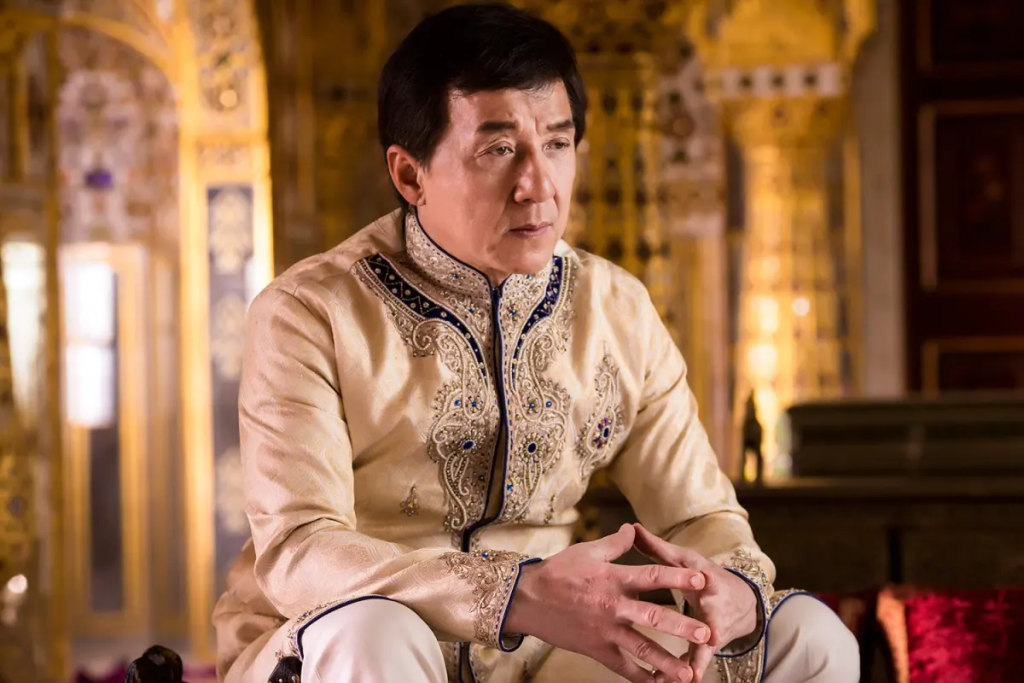
The plot thickens when Randall (Sonu Sood), a mercenary claiming descent from the treasure’s original owners, ambushes Jack’s team in a Tibetan ice cave. What follows is a whirlwind of chases, fights, and double-crosses, with Jones (Aarif Rahman), a roguish treasure hunter, adding both help and havoc. The treasure—a diamond scepter called the “Eye of Shiva”—unlocks a temple filled not with gold, but with ancient knowledge. It’s a race against time as Jack uses his kung fu skills and wits to outmaneuver Randall, culminating in a showdown that’s as philosophical as it is physical.
Action That Packs a (Silly) Punch
If you’re here for action, Kung Fu Yoga delivers—though not always with the polish of Chan’s golden years. The film’s standout is a Dubai car chase, a four-minute frenzy of spinning vehicles, mid-air flips, and a lion lounging in Jack’s backseat. Yes, a lion—vomiting, no less—courtesy of some shaky CGI that’s more comical than convincing. Directed with gusto by Stanley Tong and aided by stunt expert Bruce Law, this sequence recaptures the reckless joy of old-school Hong Kong cinema, even if the digital effects occasionally undercut the thrill.
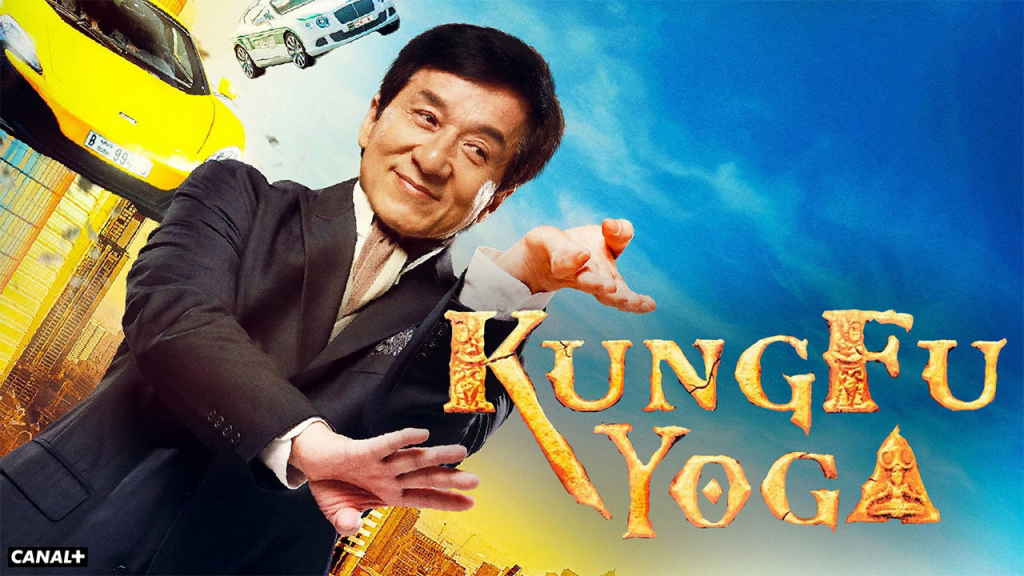
The hand-to-hand combat shines brighter. Jack’s fights—like a hotel brawl where he pirouettes over a railing or a temple clash blending kung fu with slapstick—showcase his enduring agility, even at 62. The choreography lacks the raw danger of his Police Story days, but it’s clever and playful, using props and environments in true Jackie fashion. A late-game battle in an underground Shiva temple mixes martial arts with yoga-inspired moves (finally!), though the “yoga” in the title feels more like a marketing nod than a narrative focus. Still, the action’s fast pace and absurdity keep you hooked, even when the CGI falters—like those cringe-worthy hyenas or the PlayStation-esque opening battle.
A Cast of Charm and Chaos
Jackie Chan as Jack is the beating heart of Kung Fu Yoga. He’s not breaking bones anymore, but his charisma—equal parts wise mentor and goofy uncle—carries the film. Whether he’s lecturing about history, cracking quips, or dodging mercenaries, Chan’s effortless likability shines. His physicality, though dialed back, still impresses—a twirl here, a kick there—reminding us why he’s a legend.
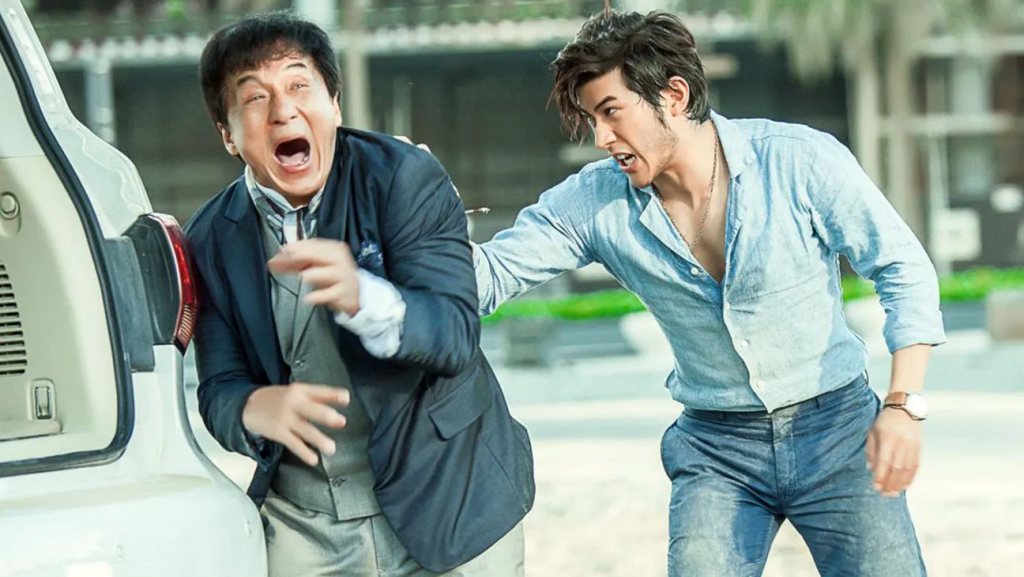
Aarif Rahman’s Jones is a scene-stealer, channeling a Han Solo vibe with swagger and charm. He’s the wildcard—stealing the diamond, then joining the team—adding a spark to the ensemble. Disha Patani’s Ashmita is stunning but underused, her role leaning on eye candy more than depth, though she holds her own in the action. Sonu Sood’s Randall is a serviceable villain—dashing yet one-note—lacking the menace to truly threaten Jack’s crew. Supporting players like Lay Zhang and Miya Muqi fade into the background, while Eric Tsang’s brief turn as an oil expert brings a familiar face but little impact.
The real surprise? A Bollywood-style finale where the cast breaks into a Farah Khan-choreographed dance number. It’s jarring, delightful, and utterly nonsensical—perfectly encapsulating the film’s tone.
A Cultural Mashup with Mixed Results
Kung Fu Yoga bills itself as a fusion of Chinese and Indian cultures, but it’s more a collage than a blend. The Sino-Indian co-production—initially backed by Viacom 18 before they pulled out—aims to bridge East and West, yet it leans heavily toward Chinese sensibilities. The treasure hunt nods to Indiana Jones, with Jack as a kung fu-wielding Dr. Jones, but the cultural synergy feels surface-level. Yoga gets a fleeting mention (a “fetal breath” escape trick), while kung fu dominates the fights. The Indian elements—Rajasthan’s forts, a Shiva temple—look gorgeous but play like a tourist brochure, not a story driver.
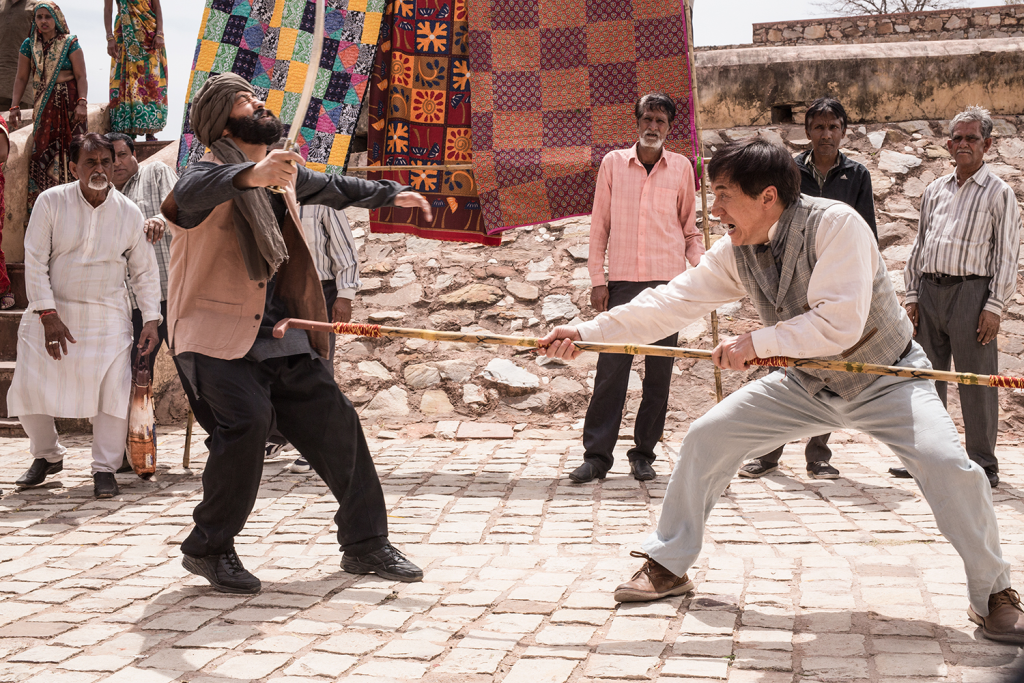
The script, penned by Tong, prioritizes spectacle over coherence. Plot holes abound—why does Randall wait 40 minutes to strike? How does a diamond unlock a temple?—but the film’s breezy 107-minute runtime shrugs them off. It’s not about logic; it’s about fun. The settings—Tibet’s icy peaks, Dubai’s sleek highways, India’s golden deserts—are eye-popping, shot with a vibrancy that pops off the screen. Nathan Wang’s score keeps the energy pumping, though it’s the Bollywood outro song that sticks with you.
A Treasure of Entertainment, Not Depth
Kung Fu Yoga isn’t high art—it’s a popcorn flick with a big budget and bigger ambitions. It’s a throwback to Chan’s Armour of God days, filtered through a modern lens of CGI and cross-cultural appeal. Critics gave it a 48% on Rotten Tomatoes, calling it “silly” or “a mess,” but audiences in China lapped it up, making it a Lunar New Year smash. In India, it flopped, grossing just $614,000—perhaps the Bollywood bits felt too tacked-on.
The film’s charm lies in its shameless excess. It’s not the Jackie Chan of Drunken Master, risking life and limb, but an older, wiser Jackie having fun. The message—that knowledge, not riches, is the real treasure—lands softly amid the chaos, a nod to the film’s light philosophical streak. It’s flawed, sure: the CGI grates, the plot wobbles, and the cultural mashup doesn’t fully gel. Yet, there’s an infectious energy here, a refusal to take itself seriously that’s hard to resist.
Why It’s Worth the Ride
Kung Fu Yoga is a cinematic fever dream—part action flick, part comedy, part travelogue. It’s not Chan’s best, but it’s far from his worst (looking at you, The Spy Next Door). For fans, it’s a nostalgic hit of Jackie doing what he does best: fighting, falling, and flashing that million-dollar grin. For newcomers, it’s a quirky intro to his world, flaws and all. At its core, it’s about enjoying the ride—lion in the backseat included.
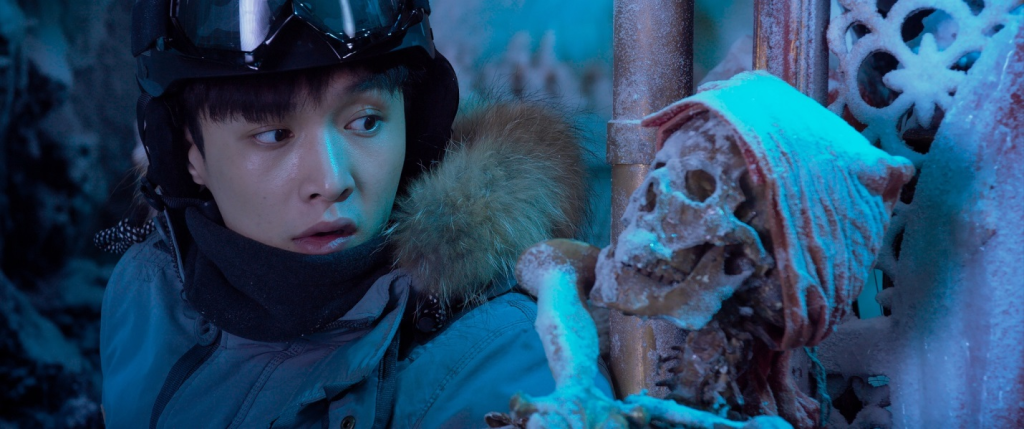
Thanks for tagging along on this wild trek through Kung Fu Yoga! If this romp sparked your curiosity, stick around—there’s more movie madness to unpack. What’s your take on Jackie’s latest adventures? Let me know, and let’s keep the reel talk rolling!
